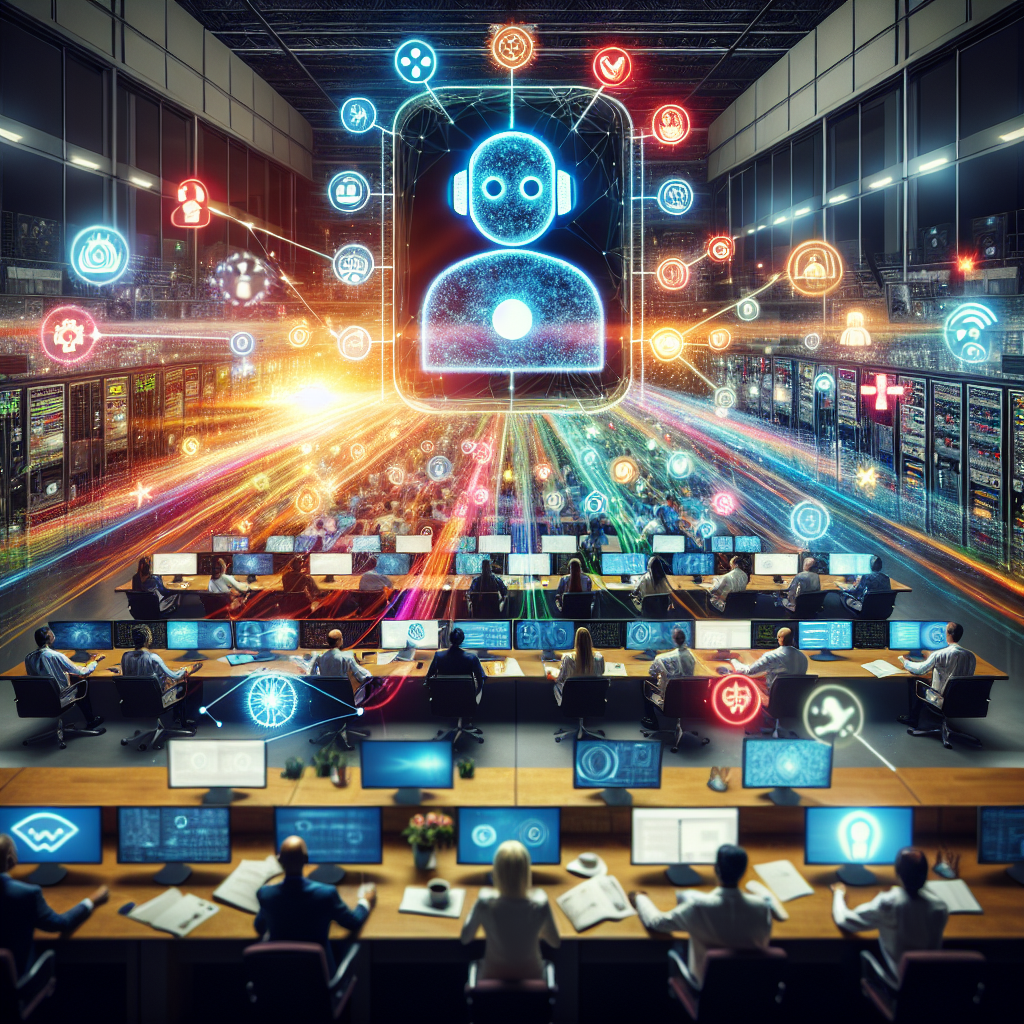In recent years, the use of conversational AI in disaster preparedness and response planning has become increasingly important. Conversational AI refers to artificial intelligence systems that can engage in natural language conversations with humans. These systems are able to understand and respond to human language inputs, making them an ideal tool for communicating with individuals during emergency situations.
The Role of Conversational AI in Disaster Preparedness
Conversational AI technology can play a crucial role in disaster preparedness by providing real-time information to individuals in affected areas. For example, during a hurricane or earthquake, conversational AI systems can be used to provide updates on evacuation routes, shelter locations, and emergency contact information. By offering this information in a conversational format, individuals can quickly and easily access the information they need to stay safe during a disaster.
Conversational AI can also be used to facilitate communication between emergency responders and individuals in need of assistance. For example, during a wildfire, individuals can use a conversational AI system to report their location and request help. Emergency responders can then use this information to dispatch resources to the affected area quickly and efficiently.
In addition to providing real-time information and facilitating communication, conversational AI can also be used to gather data and monitor disaster situations. For example, conversational AI systems can be used to conduct surveys to assess the needs of individuals in affected areas. This data can then be used to inform response efforts and allocate resources effectively.
The Role of Conversational AI in Disaster Response Planning
Conversational AI technology can also play a crucial role in disaster response planning by helping organizations develop effective response strategies. For example, conversational AI systems can be used to simulate different disaster scenarios and assess the effectiveness of various response strategies. By using this technology to conduct simulations, organizations can identify potential gaps in their response plans and make necessary adjustments to improve their preparedness.
Conversational AI can also be used to automate certain aspects of disaster response planning, such as resource allocation and logistics coordination. For example, conversational AI systems can be used to track the availability of emergency supplies and coordinate the distribution of resources to affected areas. By automating these tasks, organizations can streamline their response efforts and ensure that resources are deployed efficiently.
In addition to aiding in response planning, conversational AI can also be used to train emergency responders and educate the public about disaster preparedness. For example, conversational AI systems can be used to deliver interactive training modules that simulate emergency scenarios and teach individuals how to respond effectively. By using this technology to deliver training, organizations can ensure that responders are well-prepared to handle a wide range of disaster situations.
FAQs
Q: How can conversational AI technology improve communication during a disaster?
A: Conversational AI technology can improve communication during a disaster by providing real-time information to individuals in affected areas. By offering updates on evacuation routes, shelter locations, and emergency contact information in a conversational format, individuals can quickly and easily access the information they need to stay safe.
Q: How can conversational AI technology aid in disaster response planning?
A: Conversational AI technology can aid in disaster response planning by helping organizations develop effective response strategies. By using this technology to conduct simulations of different disaster scenarios, organizations can identify potential gaps in their response plans and make necessary adjustments to improve their preparedness.
Q: How can conversational AI technology be used to train emergency responders?
A: Conversational AI technology can be used to train emergency responders by delivering interactive training modules that simulate emergency scenarios and teach individuals how to respond effectively. By using this technology to deliver training, organizations can ensure that responders are well-prepared to handle a wide range of disaster situations.
In conclusion, conversational AI technology plays a critical role in disaster preparedness and response planning by providing real-time information, facilitating communication, and aiding in response strategy development. By leveraging the capabilities of conversational AI, organizations can improve their preparedness for disasters and ensure that response efforts are efficient and effective. As the technology continues to advance, we can expect to see even greater integration of conversational AI in disaster planning and response efforts.

